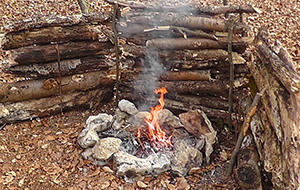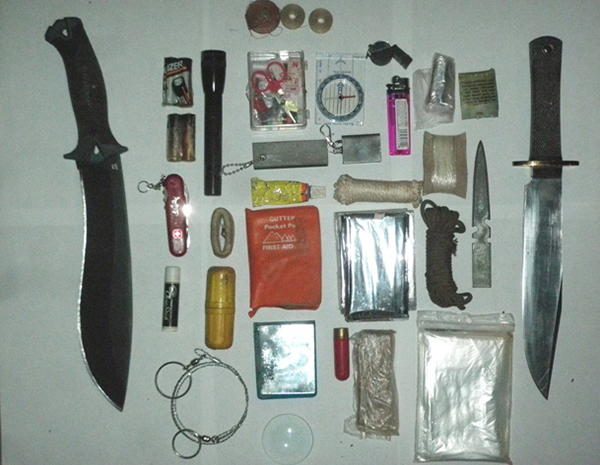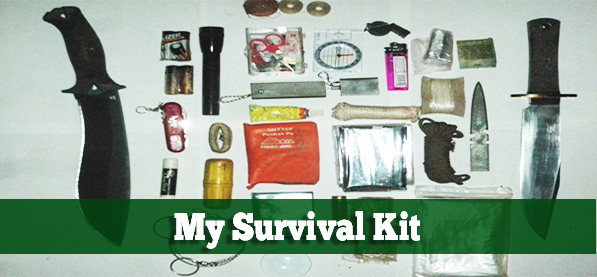As an avid hiker, camper, hunter, and fisherman, I have become very adept at noting and remembering any unusual features of the terrain I am traveling in for use as navigational aids.
However, even with my extensive experience traveling in the outdoors, I have become well and truly lost on two occasions in my life and, I assure you, it is a very disconcerting feeling! Consequently, even someone as experienced as myself can be overcome by the panic that accompanies being lost in the wilderness.
The first time this happened to me, I was camping in a remote wilderness area that I was not familiar with. However, since I had followed an old logging road in to the area that I was exploring that day, I mistakenly assumed that it would be a simple matter for me to find my way out again. However, I was wrong! The reason for this is that I had decided to stay until after dark and, I can tell you with absolute certainty based on many years of experience in the woods that unfamiliar terrain looks VERY different after dark!
When I finally decided to retrace my steps back to my camp site, I quickly became disoriented and, with rising anxiety, I began looking for an alternate route back to my campsite. Thus, when I ran across a deep, boulder strewn gully leading downhill, I reasoned that if I simply followed the gully down the side of the mountain, that I would eventually run across the main dirt road that I had used to enter this area in my vehicle and from there, I figured that it would be a simple matter to find my way back to my campsite. However, the terrain in that gully was so rough that, even with a flashlight in hand, I still took a couple of bad tumbles.
Thus, I finally admitted to myself that if I continued on my present path, I was likely to severely injure myself and thus, I made the wise decision to climb back out of the gully and return up the mountain to my original starting point even though I REALLY wanted to get back to my campsite that night.
So, once I arrived back where I had started from, rather than chance further disorientation and possible injury, I proceeded to use the items from my survival kit, along with my survival knife, to create a new campsite where I could comfortably spend the night and then find my way back out to my original campsite at the base of the mountain after dawn.
Therefore, in order to accomplish this, I first set about starting a fire using the waterproof matches and fire starter blocks that I carry in my survival kit. Then I used my survival knife to cut some saplings which I used to build a simple lean-to shelter which I waterproofed using two heavy-duty garbage bags from my survival kit. Then, I used my wire, survival saw to cut up some dried limbs I had found nearby into shorter pieces suitable for fire wood for the night.
Related: Finding Shelter in the Wild
In addition, I also used some pieces of wood to build a reflector for my fire which directed a lot of the heat created by my fire back towards my shelter. Then, I stripped the boughs off of numerous pine tree limbs to create a ground mat that would insulate my body from the ground and help me retain my body heat. Then, I used the two foil space blankets from my survival kit to create a warm, comfortable bed for the night. Then, since I had the forethought to include extra food in my day pack, I was able to eat a meager supper before retiring for the night. Thus, had it not been for the additional items I was carrying in my day pack along with the items I was carrying in my survival kit, along with my survival knife, I would have been forced to spend a miserably cold and uncomfortable night on the side of that mountain!
limbs to create a ground mat that would insulate my body from the ground and help me retain my body heat. Then, I used the two foil space blankets from my survival kit to create a warm, comfortable bed for the night. Then, since I had the forethought to include extra food in my day pack, I was able to eat a meager supper before retiring for the night. Thus, had it not been for the additional items I was carrying in my day pack along with the items I was carrying in my survival kit, along with my survival knife, I would have been forced to spend a miserably cold and uncomfortable night on the side of that mountain!
However, since I was well prepared instead, I awoke refreshed and was then easily able to find my way back down the mountain to my original campsite. So, if you ever find yourself in a similar situation, you will thank yourself a thousand times that that you had the foresight to assemble and carry a survival kit!
A list of items you should carry in your survival kit:
- Small flashlight with extra batteries
- Cyalume light sticks
- Cigarette Lighter
- Waterproof matches
- Magnesium fire starter with striking insert
- Fiber or wax fire starter blocks
- Magnifying glass (glass only: for starting fires in the day time)
- Wire survival saw
- Swiss Army Knife
- Diamond coated knife sharpener
- Foil emergency space blankets (2)
- Emergency rain poncho
- Heavy duty garbage bags (2)
- Small diameter rope, cord, string, and nylon sewing thread
- Assorted sewing needle kit
- Small sewing kit
- Water purification tablets
- A first aid kit with band aids, bandages, and moleskin
- Adhesive tape
- Aspirin
- Antibiotic ointment
- Chapstick
- Snake bite kit
- Small piece of cardboard with lightweight fishing line wrapped around it
- Small plastic container with snelled fish hooks and lead split shot
- Stainless steel wire snares
- Fish spear and/or frog gig
- Compass
- Coach’s whistle
- Signal mirror
- Orange trail marker tape
Related: How to Build an EMP Emergency Car Bag
So, as you can see, having a survival kit along with you can literally make the difference between bedding down in misery and fear or setting up a comfortable, if primitive, camp site to spend the night complete with a survival shelter and a nice, warm, fire. In fact, simply alleviating your anxiety combined with the mesmerizing effects of a camp fire can go a long way toward enabling you to survive a wilderness emergency. In addition, knowing that you have the tools to navigate and to signal for help with along with the means to procure food if an extended stay is necessary is a huge boon. In fact, you would be amazed at just how much you can do with even a small, properly stocked, survival kit!
You may also like:
 Best Natural First Aid: Stops Bleeding In 10 Seconds!
Best Natural First Aid: Stops Bleeding In 10 Seconds!
Arizona Farmer Accidentally Discovers Trick to Turn Air Into Water (Video)
What You Really Need in Your SHTF First Aid Kit
 Bill Bernhardt is a professional outdoor/wildlife writer and is a professional fly fishing instructor and guide as well as a professional hunting guide. He is an avid outdoors-man with expertise in fly fishing, hunting, firearms, archery, cutlery, outdoor survival, camping, and kayak touring. If you liked this article and want to read more from Bill, check out his Amazon Author Page.
Bill Bernhardt is a professional outdoor/wildlife writer and is a professional fly fishing instructor and guide as well as a professional hunting guide. He is an avid outdoors-man with expertise in fly fishing, hunting, firearms, archery, cutlery, outdoor survival, camping, and kayak touring. If you liked this article and want to read more from Bill, check out his Amazon Author Page.















I noticed that there was both a sewing kit and a sewing needle…I think those items should have been combined into a single item to carry.
Also, it would be quite handy to have a container to heat water in…I didn’t see one mentioned. Even aluminum foil could be shaped into some kind of container and a stick to use as a handle, though I’d prefer a ceramic (light weight) or metal one (withstands heat better). Warm liquids–even water–do a lot for morale and can help increase core temperatures. You probably carry something along that line, but it wasn’t specifically mentioned. (Nor was water included, for that matter…not every location will have water, and collecting water by placing a bag over tree limbs/leaves may not be practical in Winter or late Fall.)
Of course, depending on where you expect to be, you’d adjust your “carry” items accordingly.
Thanks for sharing your experiences. I’ve only been lost once and it is terrifying. Fortunately, I found a ‘marker’ that helped me regain my bearings. (I really need to carry a local topo map and a compass EVERY time I venture away from camp rather than relying solely on memory.)
Thanks for this comprehensive list. There are a lot of things to think about and consider. I am always trying to get things together in case of an emergency for my family of four (two of the members being small children).